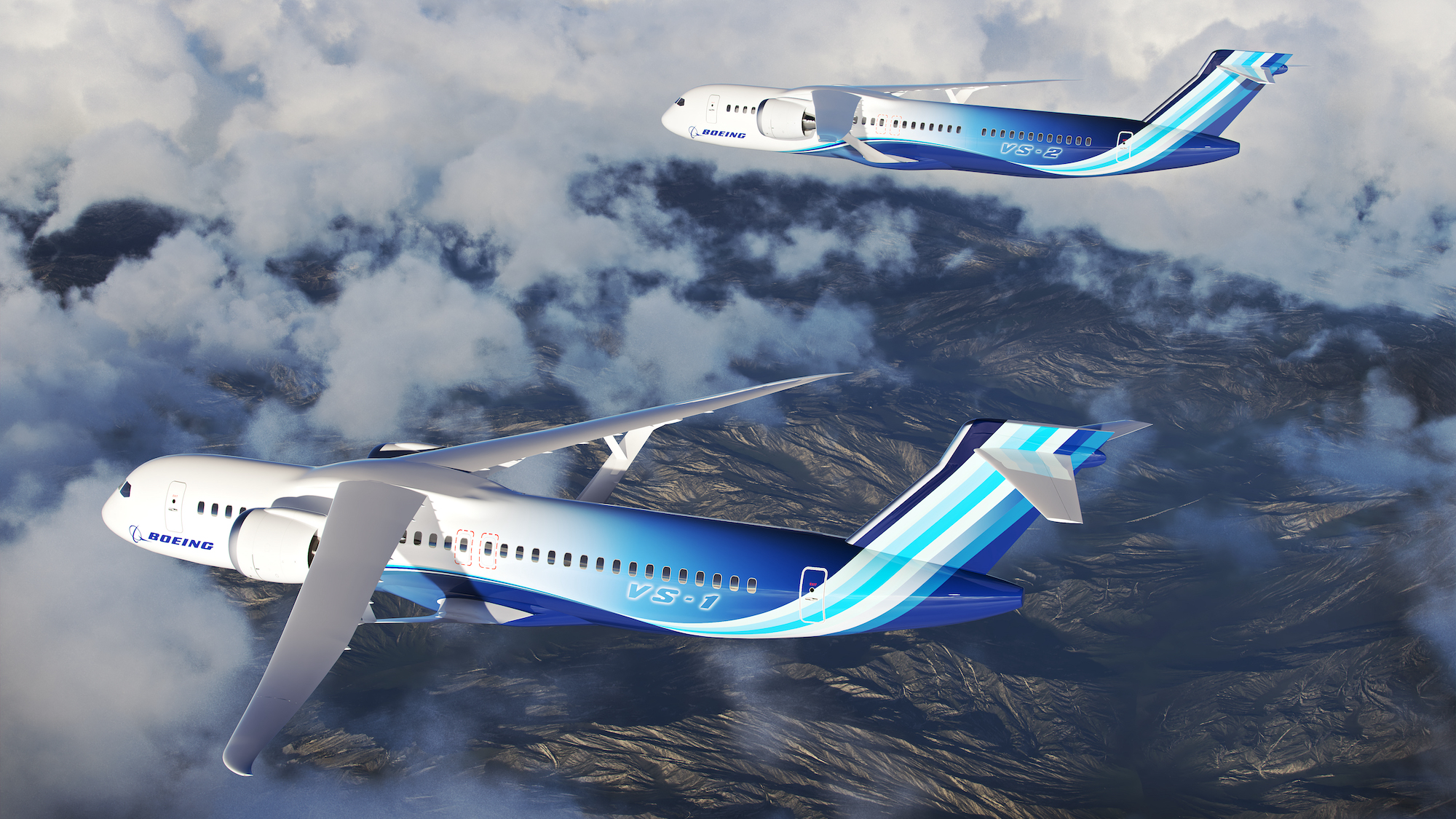

Step into a commercial airliner like a Boeing 737, take a seat, and look out the window: You’ll likely be able to see the wing protruding out from the lower part of the plane’s body, partly blocking your view of the ground below.
But today, NASA announced that it will be working with Boeing to produce an experimental new aircraft demonstrator that looks radically different from the jets that passengers are used to seeing. The flying machine will feature long, skinny wings that extend from the top of the plane’s fuselage, above the windows, not below. And because these wings will be more slender and more lengthy than typical wings on commercial aircraft, they will be supported by trusses.
The reason for creating this new plane, which will be called the Sustainable Flight Demonstrator, is simple: To find a way to make the aircraft much more fuel efficient and better for the environment. The figure that NASA is shooting for is as much as 30 percent better efficiency, although that radically better efficiency gain wouldn’t come from new wings alone.
At a press conference in Washington, DC today, Pamela Melroy, NASA’s deputy administrator, said the initiative was a “major new NASA commitment to reducing carbon emissions in the air transportation system,” which she referred to as “one of the most difficult industries to decarbonize.”
In addition to those long, skinny wings, the aircraft will have two engines—one under each wing—and a tail in the rear shaped like a T. It will be a single-aisle aircraft like a Boeing 737 or an Airbus A320, and not a wide-body with two aisles, like a 787 or an A350. The goal is that planes like this would serve the typical, workaday flights of commercial air travel, connecting destinations like New York City with Chicago.
The star of the show is the wing.
“We’re going to reduce as much as 30 percent the fuel consumption—with better engines, and look at this wing,” Bill Nelson, NASA’s administrator, said at the event. The wing is “so long and thin, it has to have a brace.”

In addition to supporting the wings—which are what give an airplane the lift it needs to fly—the trusses, or braces, can pull off another trick. “You can actually get lift on this brace, as well as [from] the wing, [like] the old concept of the old biplanes,” Nelson added.
Aircraft engineering is all about tradeoffs: This experimental plane needs those trusses to support the skinny wings, but there’s a good reason for the wings to be long and skinny in the first place. “It’s our plan to demonstrate this extra-long thin wing—stabilized by the braces—that will make commercial airliners much more fuel efficient by creating less drag,” he said.
The plane’s design is technically referred to as a TTBW, which stands for Transonic Truss-Braced Wing. In May of 2020, Popular Science took a close look at NASA’s efforts regarding such an aircraft. Aerospace engineers say that the reason why long slender wings produce less drag is because they can reduce vortices at the wing tips. A NASA senior aerospace engineer, Kevin James, explained it at the time like this: “Out at the tip of the wing, where there’s no more wing beyond what the air can see, the air is very clever, and it will simply just go around the tip,” he said. But by making the wings longer, there is “more lift that we can generate, more efficiently.”
[Related: The illuminating tech inside night vision goggles, explained]
Drawbacks to configurations like this include the fact that a long, narrow wing could flutter, like a bridge or a sign blowing in strong winds, which is why a plane with these wings needs to have trusses. And of course, if aircraft with this design end up taking the place of narrowbody planes like 737s, they’ll need to fit into the gate at the airport—and long wings could make that challenging.
NASA said today that along with Boeing, they plan to get this futuristic, more-fuel efficient bird flying by 2028, and even said that planes like this could be in service in the 2030s.
Globally, aviation represented more than 2 percent of carbon dioxide emissions in 2021 from “energy-related” sources, according to the International Energy Agency. In addition to exploring new aircraft designs like the TTBW in the form of the Sustainable Flight Demonstrator, there are other ways of trying to make aircraft greener, including running smaller planes on purely electric power to using sustainable aviation fuel. “I’m still very concerned about the carbon footprint of global air travel,” Melroy said at the beginning of the event. “The aviation sector is a giant in the global economy, and we have to take that seriously.”
